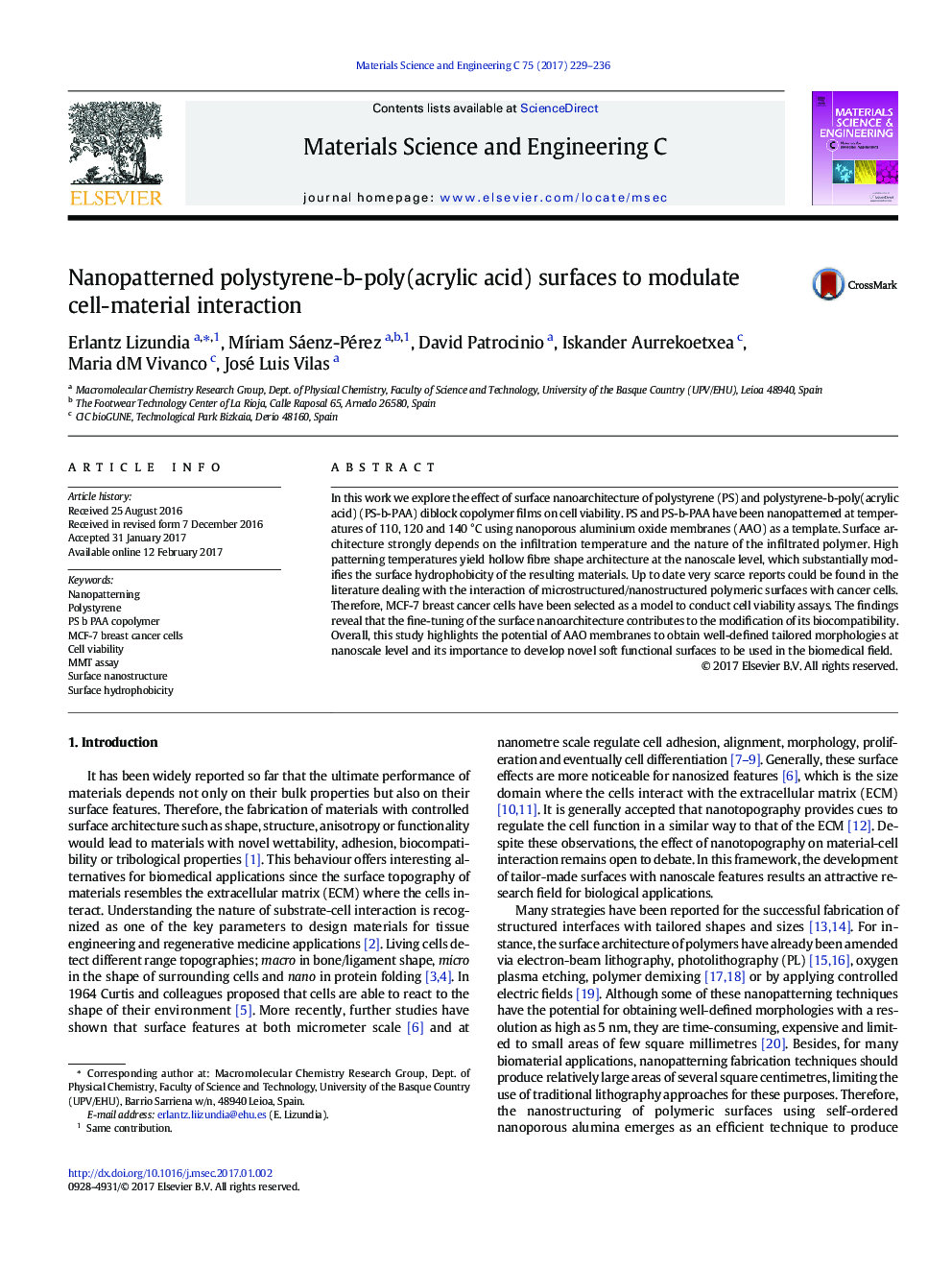| Article ID | Journal | Published Year | Pages | File Type |
|---|---|---|---|---|
| 5434820 | Materials Science and Engineering: C | 2017 | 8 Pages |
â¢Nanostructured PS and PS-b-PAA surfaces were obtained using AAO as a template.â¢Hollow fibre shape architecture at the nanoscale level was achieved.â¢Hydrophobicity is engineered by copolymerization and changing processing temperature.â¢The interaction of nanostructured polymeric surfaces with cancer cells was studied.â¢PS-b-PAA block copolymers show smaller cytotoxicity than neat PS.
In this work we explore the effect of surface nanoarchitecture of polystyrene (PS) and polystyrene-b-poly(acrylic acid) (PS-b-PAA) diblock copolymer films on cell viability. PS and PS-b-PAA have been nanopatterned at temperatures of 110, 120 and 140 °C using nanoporous aluminium oxide membranes (AAO) as a template. Surface architecture strongly depends on the infiltration temperature and the nature of the infiltrated polymer. High patterning temperatures yield hollow fibre shape architecture at the nanoscale level, which substantially modifies the surface hydrophobicity of the resulting materials. Up to date very scarce reports could be found in the literature dealing with the interaction of microstructured/nanostructured polymeric surfaces with cancer cells. Therefore, MCF-7 breast cancer cells have been selected as a model to conduct cell viability assays. The findings reveal that the fine-tuning of the surface nanoarchitecture contributes to the modification of its biocompatibility. Overall, this study highlights the potential of AAO membranes to obtain well-defined tailored morphologies at nanoscale level and its importance to develop novel soft functional surfaces to be used in the biomedical field.
Graphical abstractDownload high-res image (169KB)Download full-size image
